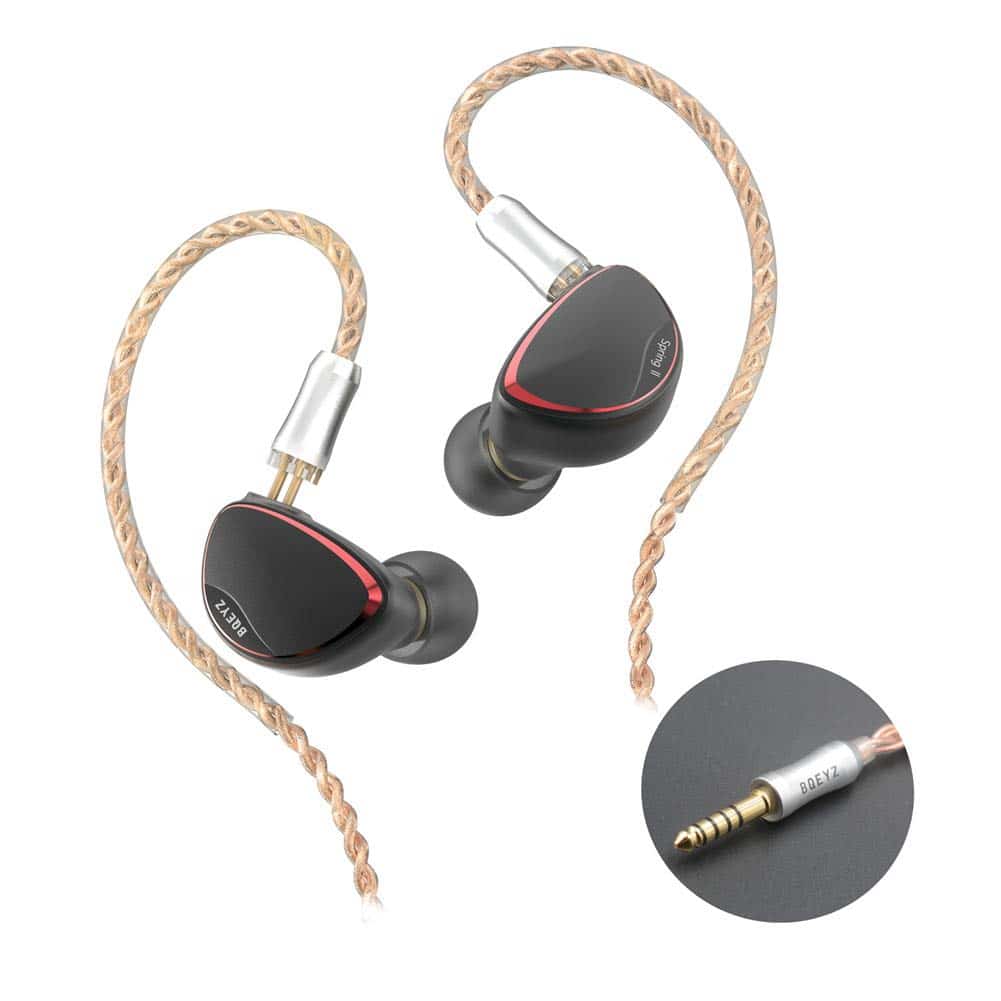
How do Wireless Headphones work?
So, how do Wireless Headphones work? Wireless headphones work by sending audio signals from the source device to the headphones. The audio signal is transmitted via a transmitter that is connected to the source device. The transmitter sends the audio signal to an antenna, which then broadcasts the signal to the headphones. The headphones receive the signal and decode it to audio.
Make sure you know how to prevent your earbuds from breaking if you are going to be using them as part of your daily work out.
Wireless Headphones Transmission Methods
There are two main types of wireless headphones: RF and IR.
RF Wireless Headphones
RF wireless headphones use radio frequencies to transmit audio signals from the source device to the headphones. The RF signal is transmitted via a transmitter that is connected to the source device. The transmitter sends the audio signal to an antenna, which then broadcasts the signal to the headphones. The headphones receive the signal and decode it to audio. RF wireless headphones are more common than IR wireless headphones.
IR Wireless Headphones
IR wireless headphones use infrared light to transmit audio signals from the source device to the headphones. The IR signal is transmitted via an infrared transmitter that is connected to the source device. The transmitter sends the audio signal to an infrared LED, which then broadcasts the signal to the headphones. The headphones receive the signal and decode it to audio. IR wireless headphones are less common than RF wireless headphones.

Wireless Headphones Design
Wireless headphones come in a variety of designs. The most common design is the over-the-ear design, which is the most comfortable and secure design. Over-the-ear wireless headphones are also the most popular design.
Another common design is the on-ear design, which is similar to the over-the-ear design but with smaller ear cups. On-ear wireless headphones are less comfortable and secure than over-the-ear wireless headphones, but they are still very popular.
The third common design is the in-ear design, which is a small earbud that fits into your ear canal. In-ear wireless headphones are very small and portable, but they are not as comfortable or secure as over-the-ear or on-ear wireless headphones.
Wireless Headphones Advantages
There are many advantages to using wireless headphones. The most obvious advantage is that you can listen to music or watch a movie without being tied down by a wire. This makes wireless headphones great for exercising, working out, or just relaxing at home.
Another advantage of wireless headphones is that they are more portable than wired headphones. You can easily take them with you when you travel or go on vacation. You don’t have to worry about packing your wired headphones because you can just take your wireless headphones with you wherever you go.
Another advantage of wireless headphones is that they are more convenient than wired headphones. You don’t have to worry about untangling your headphones or dealing with a tangled mess. You can just take your wireless headphones out of the box and start listening to music or watching a movie.
Wireless Headphones Disadvantages
There are also some disadvantages to using wireless headphones. The most obvious disadvantage is that you have to charge your wireless headphones. You can’t just plug them into an outlet and listen to music or watch a movie. You have to charge them first, which can be inconvenient if you forget to charge them before you go on vacation.
Another disadvantage of wireless headphones is that they are more expensive than wired headphones. Wireless headphones are more expensive because they require a transmitter and an antenna, which adds to the cost of the headphones. Wired headphones don’t require any additional components, so they are less expensive than wireless headphones.
Wireless Headphones vs Wired Headphones
Wireless and wired headphones both have their advantages and disadvantages, but which one is better? It depends on what you want from your headphones. If you want something that is more convenient and portable, then you should get wireless headphones. If you want something that is more comfortable and secure, then you should get wired headphones.
Why Choose Wireless Headphones?
Wireless headphones are more convenient and portable than wired headphones. You can easily take them with you when you travel or go on vacation. You don’t have to worry about packing your wired headphones because you can just take your wireless headphones with you wherever you go.
How Does Radio Frequency Transmission Work?
Radio frequency transmission is the most common type of wireless headphone transmission. Radio frequency transmission uses radio frequencies to transmit audio signals from the source device to the headphones. The RF signal is transmitted via a transmitter that is connected to the source device. The transmitter sends the audio signal to an antenna, which then broadcasts the signal to the headphones. The headphones receive the signal and decode it to audio.
How Does Infrared Transmission Work?
Infrared transmission is another common type of wireless headphone transmission. Infrared transmission uses infrared light to transmit audio signals from the source device to the headphones. The IR signal is transmitted via an infrared transmitter that is connected to the source device. The transmitter sends the audio signal to an infrared LED, which then broadcasts the signal to the headphones. The headphones receive the signal and decode it to audio.
How Does Bluetooth Transmit Audio?
Bluetooth is a wireless technology that is used to transmit audio signals from the source device to the headphones. The Bluetooth signal is transmitted via a transmitter that is connected to the source device. The transmitter sends the audio signal to an antenna, which then broadcasts the signal to the headphones. The headphones receive the signal and decode it to audio.
Frequently asked questions about wireless headphones
What is the difference between Bluetooth and RF?
Bluetooth and RF are two different types of wireless headphone transmission. Bluetooth uses radio frequencies to transmit audio signals from the source device to the headphones. The Bluetooth signal is transmitted via a transmitter that is connected to the source device. The transmitter sends the audio signal to an antenna, which then broadcasts the signal to the headphones. The headphones receive the signal and decode it to audio. RF wireless headphones use radio frequencies to transmit audio signals from the source device to the headphones. The RF signal is transmitted via a transmitter that is connected to the source device. The transmitter sends the audio signal to an antenna, which then broadcasts the signal to the headphones. The headphones receive the signal and decode it to audio.
What is infrared transmission?
Infrared transmission is another type of wireless headphone transmission. Infrared transmission uses infrared light to transmit audio signals from the source device to the headphones. The IR signal is transmitted via an infrared transmitter that is connected to the source device. The transmitter sends the audio signal to an infrared LED, which then broadcasts the signal to the headphones. The headphones receive the signal and decode it to audio. IR wireless headphones use infrared light to transmit audio signals from the source device to the headphones. The IR signal is transmitted via an infrared transmitter that is connected to the source device. The transmitter sends the audio signal to an infrared LED, which then broadcasts the signal to the headphones. The headphones receive the signal and decode it to audio.
